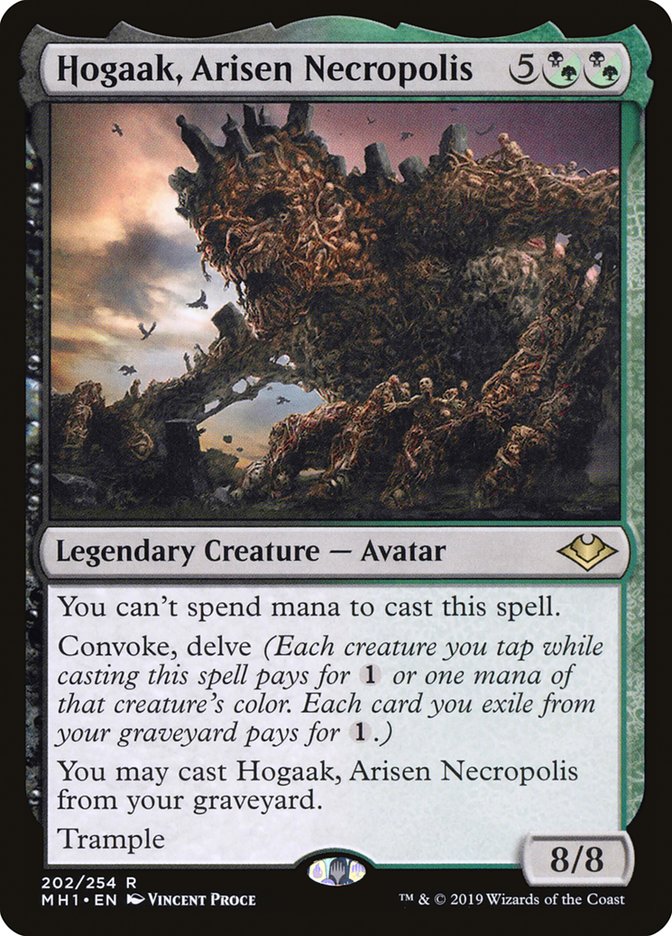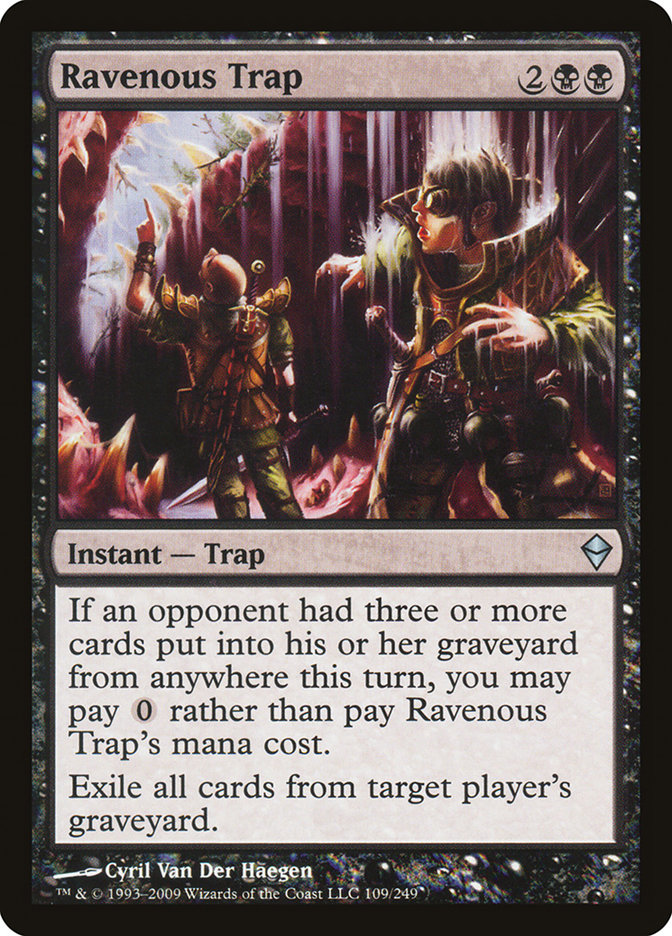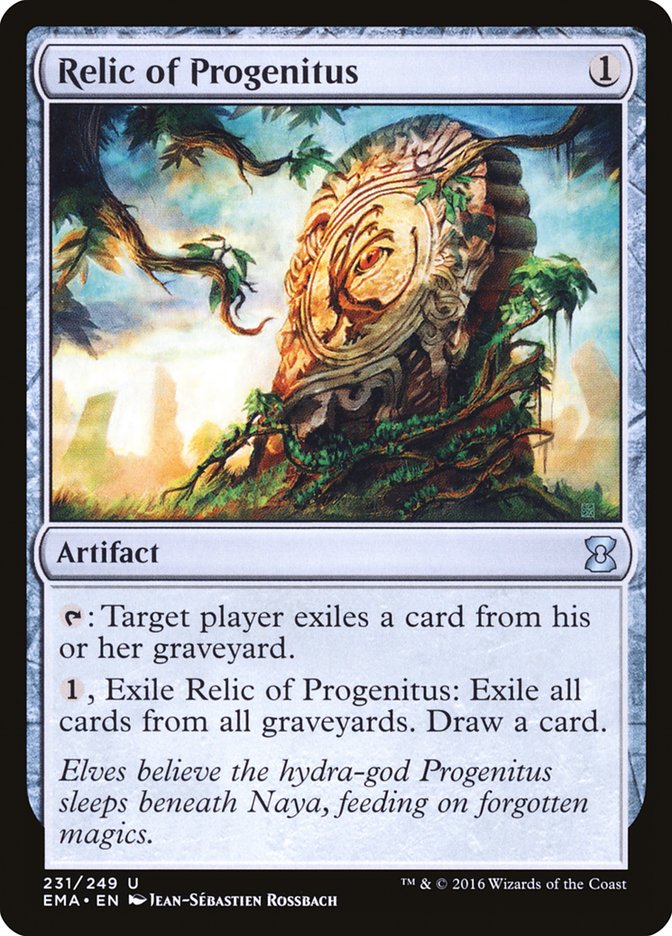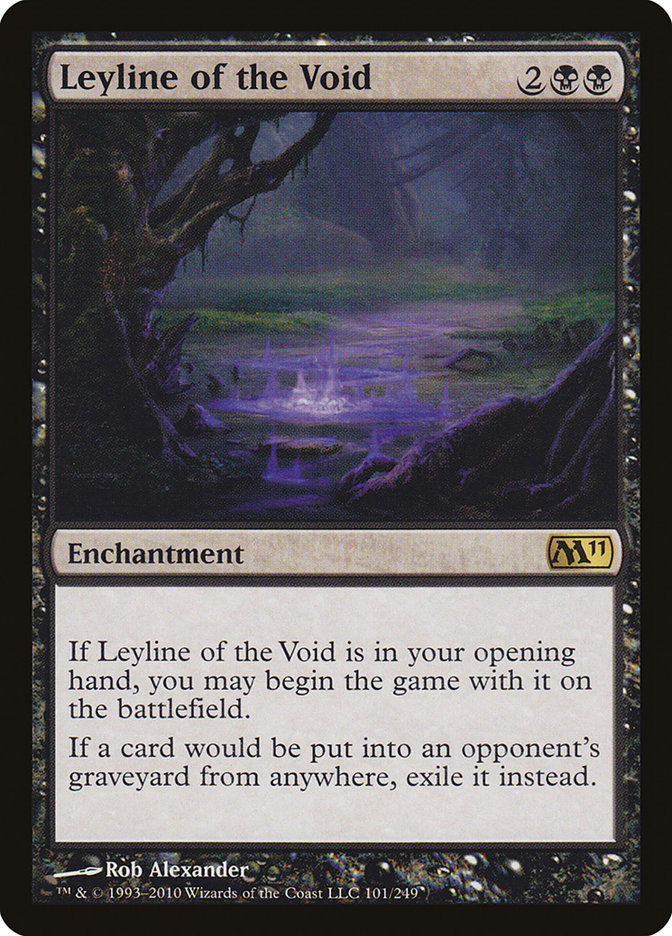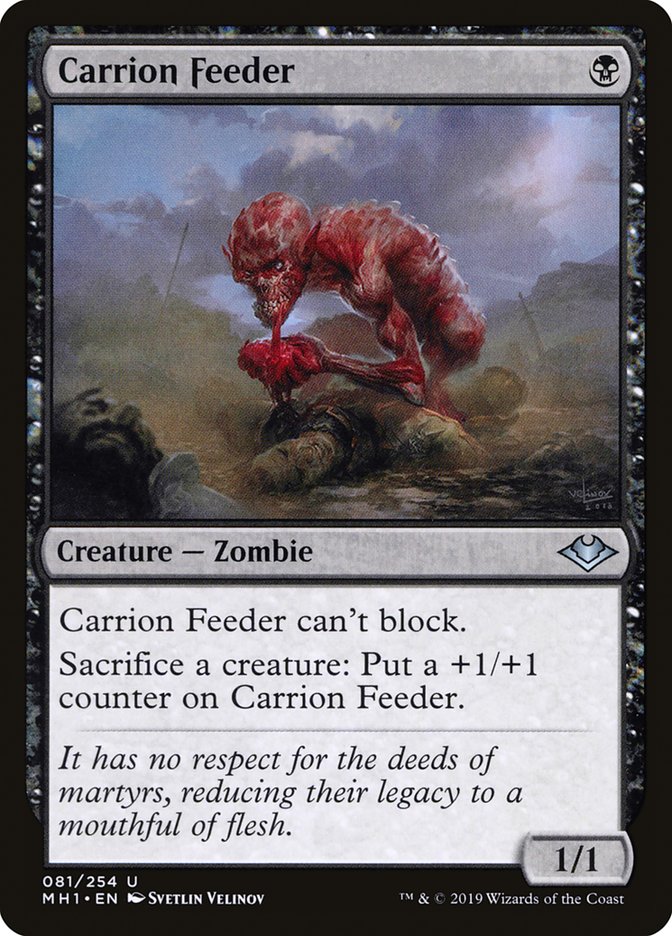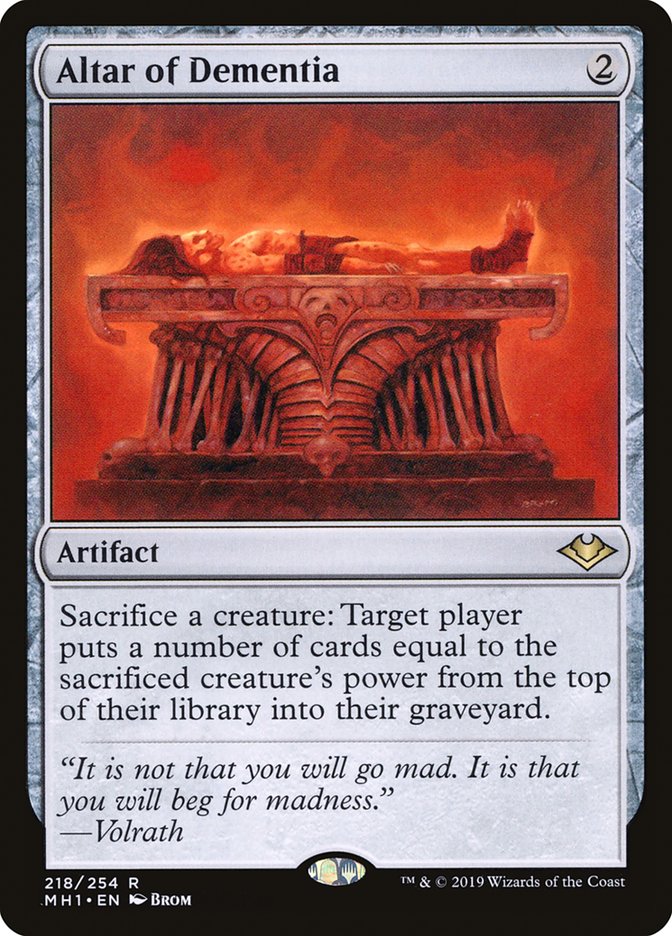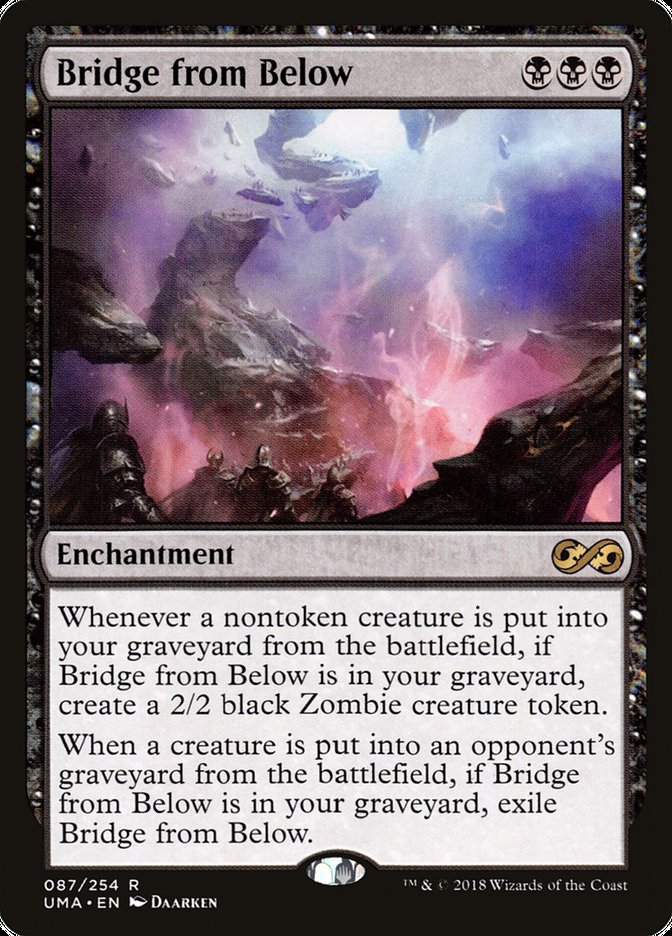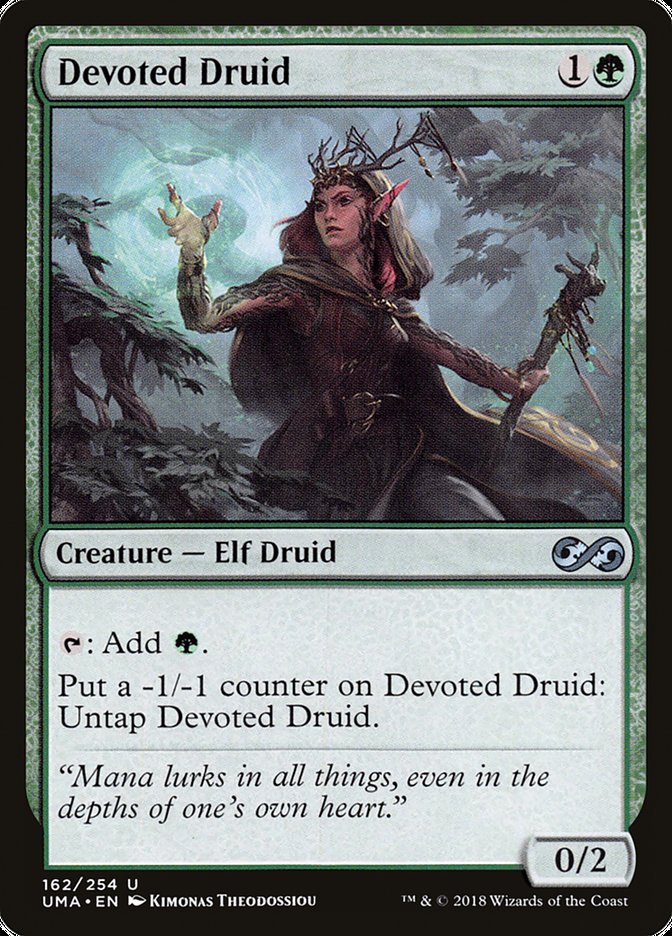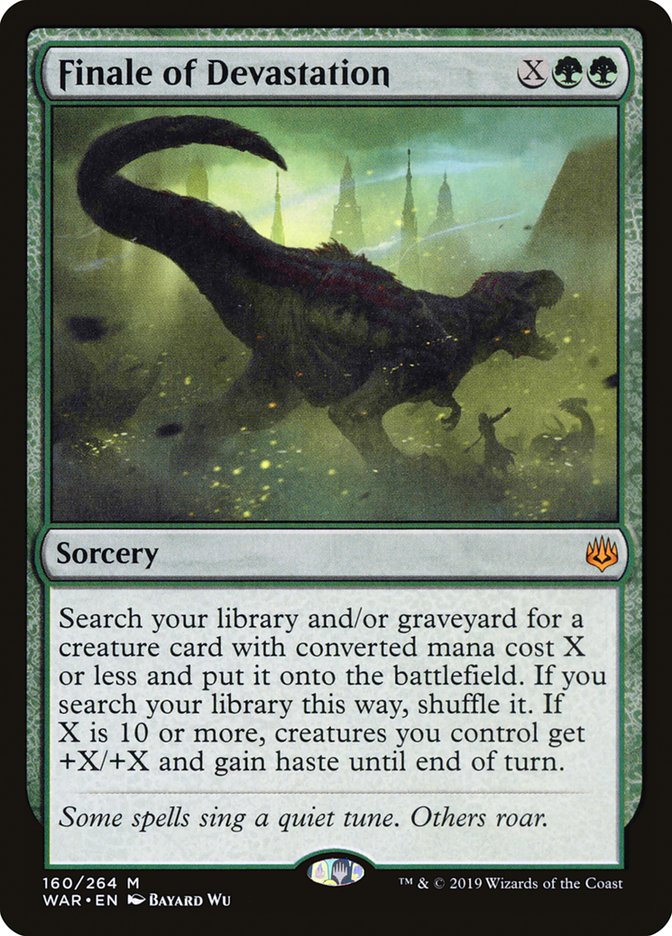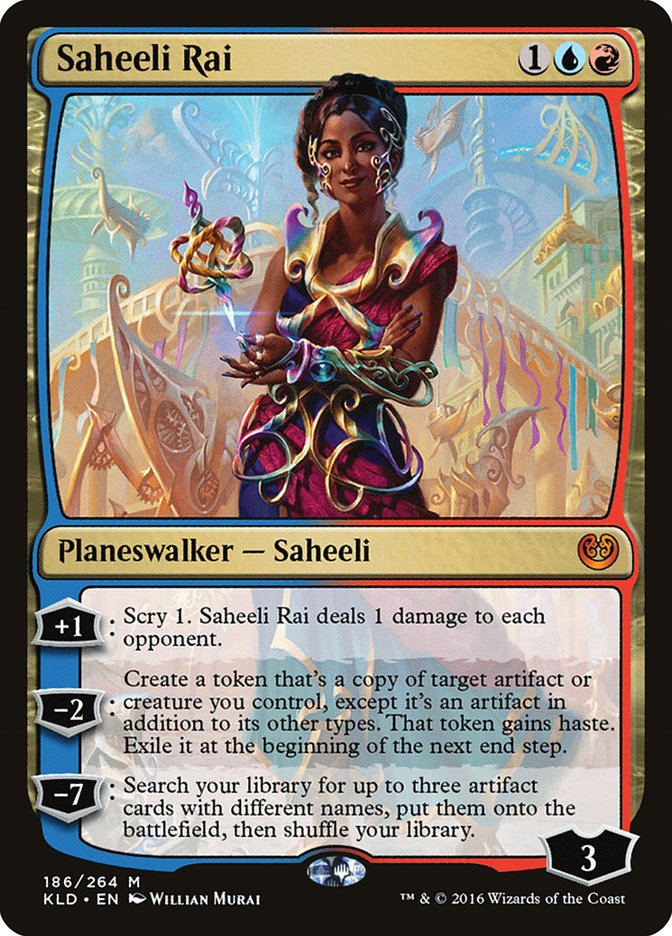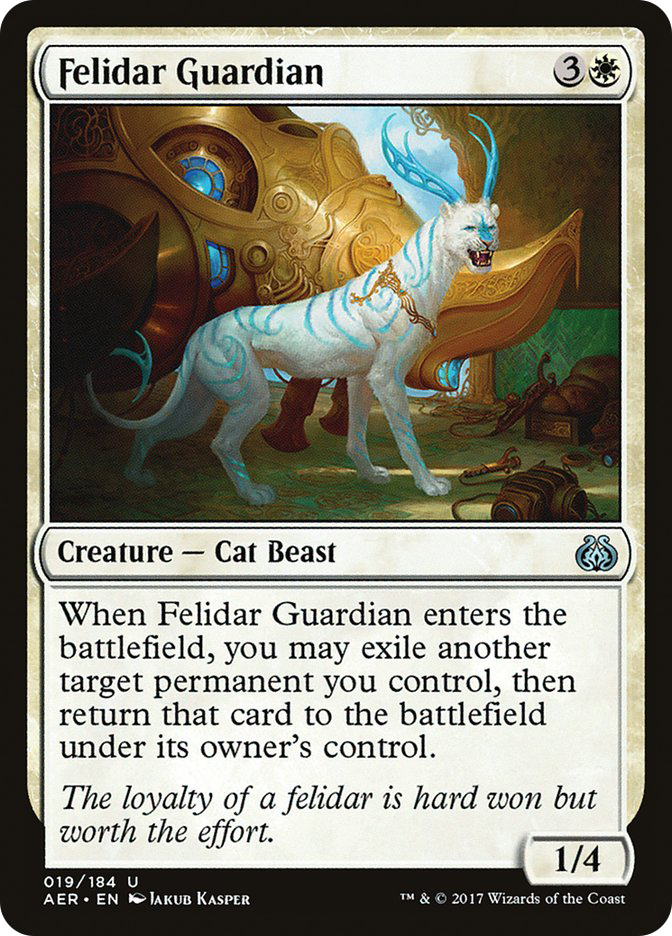Another Invitational has come and gone, and I had another quietly successful weekend, riding my precious Arclight Phoenixes to an unblemished 8-0 record in Modern, only to be let down with a mediocre choice of Gruul Aggro in Standard. I should’ve played Arclight Phoenix in both formats, but c’est la vie.
The good news is that I don’t have to play Standard again until next month. The bad news is that Modern, the format where I’ve been winning a lot over the last eight months, is about to change significantly with the arrival of Modern Horizons.
While all eyes were on the Season One Invitational, Modern Horizons was released on Magic Online and the results of the first Modern Challenge are, in a word, alarming.
Hogaak, Arisen Necropolis and Altar of Dementia, one new card and one reprint from Modern Horizons, have supercharged last year’s flash in the pan Bridgevine deck and dominated the event, putting ten copies of the deck into the Top 32. It may have fallen short of taking home the trophy, but it’s clear that this is the new “it deck” for Modern players.
Even more alarming is that with Dredge taking the trophy at the Louisville Open only two weeks ago, graveyard hate was on the rise. The other decks in the Top 8 all have three to five pieces of hate, and each of the three copies of Bridgevine are sporting the full four copies of Leyline of the Void for the mirror. It’s hard for Modern decks to commit more sideboard space than that to fighting the graveyard, though if we continue to see numbers close to this, they will be forced to find the room.
With two weeks until the Team Modern Open in Pittsburgh, it’s clear that the metagame will have to adjust to Bridgevine, and with Dredge already being a major player in the format it seems like the blueprint to beat graveyard decks is already out there, but…
Understanding those deviations will make the difference between having a reasonable but flawed plan for the matchup, and having a great one.
Here are the keys you’ll have to keep in mind when tuning your deck of choice for the Hogaak, Arisen Necropolis world.
Bring the Most Powerful Hate Cards
The first place everyone is going to go to will be graveyard hate. For a while now, we’ve seen Surgical Extractions galore since it was the best graveyard hate card against Arclight Phoenix. It wasn’t the best option against Dredge, but sometimes cutting them off of their first dredger could cause them to stumble, taking a key creature could make their battlefield anemic, or hitting Creeping Chill could allow you to win a race.
Surgical Extraction is not the answer for Bridgevine. Unlike Dredge, this deck doesn’t play hard to the graveyard on its setup turns. Instead it plays to the battlefield, fills its graveyard a small amount with Faithless Looting and Stitcher’s Supplier, and then uses sacrifice outlets, in particular Altar of Dementia, to get its synergies in place.
With this sequence, there’s rarely a hole that you can punch with Surgical Extraction. Taking Hogaak, Arisen Necropolis or Bridge from Below can stop them from executing their most powerful lines, but they’ll still have a pile of recursive creatures coming for you, and none of them rely on another creature entering like Prized Amalgam.
One-shot effects like Ravenous Trap and Relic of Progenitus are also less effective because Bridgevine plays so much to the battlefield. Tagging the early Vengevines and Bridge from Belows that they dump with Faithless Looting and Stitcher’s Supplier is good, but the window for these cards to be effective is small because once the creatures are on the battlefield, their graveyard isn’t important. Also, Altar of Dementia lets them rebuild their graveyard very quickly, whereas Dredge is forced to have a Life from the Loam or another enabler in order to recover.
Grafdigger’s Cage is the hate card that gets better against Bridgevine than it is against Dredge because there are so many recursive creatures in the deck and the sacrifice outlets get significantly worse when they run low on fodder. There’s still the issue of letting them stock their graveyard while they dig for an answer, and the fact that it doesn’t stop Bridge from Below, but if your deck has ways to mitigate those problems, Cage is something I’d look to.
But really, you’ll want to look to Leyline of the Void and Rest in Peace. This version of the deck isn’t as explosive as the one with Walking Ballistas and Goblin Bushwhackers, so I’m more willing to run the risk of Rest in Peace being too slow. What makes this deck so scary is how resilient it is, and these are the only hate cards that completely shut down the graveyard.
With more cheap, castable creatures, Bridgevine is certainly capable of winning through these cards, but most Modern decks will easily beat a pile of 2/1s, even if they are down a card. With Izzet Phoenix moving toward Pyromancer Ascension and Finale of Promise, I’m not even convinced Surgical Extraction is better in that matchup, so let’s start getting serious about attacking the graveyard.
Cut Off Their Sacrifice Outlets
When we think of graveyard enablers, Faithless Looting and Cathartic Reunion come to mind first. But the cards that make Bridgevine go are the sacrifice outlets: Carrion Feeder and Altar of Dementia. While Faithless Looting is still great in the deck, you keep plenty of hands without it, while hands without a sacrifice outlet are much more suspect. Without them, Bridge from Below is ineffective, which then makes it more difficult to cast Hogaak. You’re essentially locked in on going for a fast Vengevine draw.
The sacrifice outlets also offer built-in protection from exile effects like Anger of the Gods or Ugin, the Spirit Dragon, so if you’re playing such an effect, you’ll want to pair it with removal for those cards so as to properly set up your own to be as effective as possible.
Now, since they are different permanent types, it’s going to be hard to answer them both, but if you’re the kind of deck that can make use of Pithing Needle or Phyrexian Revoker, then they can be solid tools in your arsenal by covering either one. Abrade is a less impressive, yet still serviceable option that can handle Carrion Feeder in the early-game as well as Altar. You don’t want to have much removal in your deck, since it matches up rather poorly against recursive threats, so make sure what you do have answers their most important permanents.
Know the Corner Case Ways to Exile Bridge from Below
There are plenty of ways to kill your own creatures and you should certainly be aware of every way your deck is capable of doing so because Bridge from Below is such an important card for the deck.
Walking Ballista is an obvious one for Mono-Green Tron and Hardened Scales players, but Humans players should also know that they aren’t forced to choose a creature for Phantasmal Image to copy. Let it enter as a 0/0 and you have a mini-Surgical Extraction that didn’t cost any deck space. In the sideboard, you may want to give Izzet Staticaster another look, which can kill your own Noble Hierarch or Phantasmal Image and then stick around to check any remaining Bloodghasts or Gravecrawlers.
Izzet Phoenix players should look to kill their own Arclight Phoenixes pre-combat so they come back immediately, and Death’s Shadow pilots might want to be less aggressive with their self-damage on the early turns so Death’s Shadow itself can be cast as a 0/0.
It’s easy to get stuck into the typical play patterns of a deck, especially one we know very well, but part of leveling up is recognizing when and how to deviate from the norm. Bridge from Below is a classic incentive for these unorthodox plays and you have two weeks to add them to your repertoire.
Bridgevine Has Even Less Interaction
Dredge gets a bad reputation as a linear deck, and while Creeping Chill certainly lowered the deck’s fundamental turn, the hallmark of Dredge has always been its resilience. Its creatures keep coming back for more and it can answer your battlefield with Conflagrate, Darkblast, and Lightning Axe. There’s not a lot in the way of stopping spell-based combo decks, but Modern Dredge can certainly play a traditional attrition game with creatures and removal spells.
These Bridgevine lists have about two flex spots right now, and few people are using them on removal spells. There is the occasional Lightning Axe or Assassin’s Trophy in the sideboard, but for the most part, what you’re doing is going to happen. Bridgevine is relying on going over the top of its opponents, so they’re vulnerable to faster decks. There are two such decks that I think could give Bridgevine fits while contending with the rest of the Modern metagame: Devoted Devastation and Jeskai Saheeli.
Pete Ingram brought an innovative Devoted Druid deck featuring Finale of Devastation to the Season One Invitational that I would look to for inspiration. The Arbor Elf / Utopia Sprawl engine is great, since it ramps to four mana on Turn 2 and the deck has two great four-drops to cast in Karn, the Great Creator and Finale for Devoted Druid. Karn is a great backup plan if the combo goes awry but also finds Walking Ballista if you do execute the combo, so there’s no need to play nonsense cards like Duskwatch Recruiter.
And the splash into blue for Teferi, Time Raveler offers the best protection spell for Devoted Druid, especially in combination with Postmortem Lunge. The deck is capable of killing on Turn 3 and easily sideboards three copies of Rest in Peace. That’s a winning combination against Bridgevine. And against decks with more removal, it has a solid plan in place to win a long game with Karn, the Great Creator.
Jeskai Saheeli was the deck of choice for my BCW teammate, Jim Davis, and he took it to a Top 8 finish in the Modern Championship on Sunday, joining Ben Friedman who also picked up the deck, taking it a round further into the Top 4.
This deck doesn’t have the speed of Devoted Druid, only killing as early as Turn 4, but it’s also incredibly resilient and has plenty of space for interaction and, once again, easily slots Rest in Peace in the sideboard. The Lightning Bolts aren’t great against Bridgevine, but the Path to Exiles can do some work against a fast Vengevine or Hogaak draw, while you can rely on the combo to race the slower draws.
Of these two decks, I’d say Devoted Devastation is going to be better against Bridgevine because of its speed, but Jeskai Saheeli has more raw power to stand up to the rest of the format. If Hogaak continues to dominate like it did last weekend, then that speed advantage will be important, but if the metagame is able to contain the new bogeyman, then I’d opt for well-roundedness.
I’m sure this isn’t the only new deck we’ll see spawned by Modern Horizons, so it’s important not to overreact to the shiny new toy. We literally saw Bridgevine rise and fall out of the metagame in the span of a month only last year. This version is a huge improvement, since its pieces are all functional alone so you don’t have hands full of Walking Ballistas, Hangarback Walkers, and Goblin Bushwhackers, but let’s explore the various options available to adjust to Bridgevine before calling for bans.
Modern is a surprisingly resilient format, adapting to new decks that look dominant for a time, from Grixis Death’s Shadow to Humans to Dredge to Izzet Phoenix. I’m confident the format will adapt once more, and fortunately we have two weeks without a major paper tournament to make the necessary adjustments.


